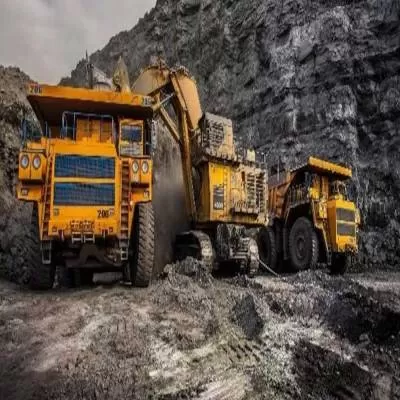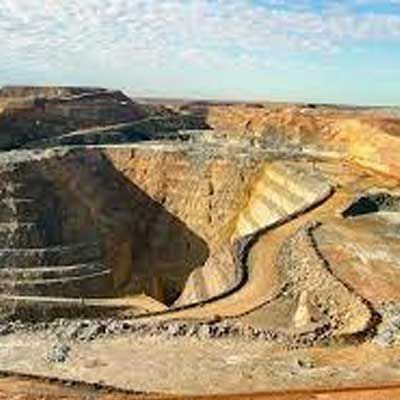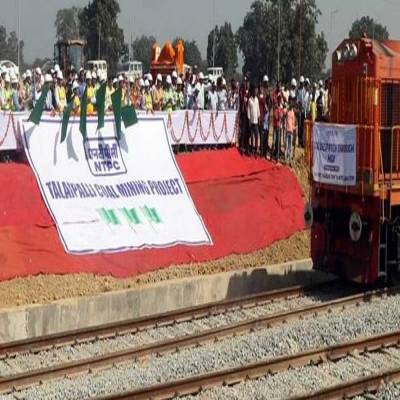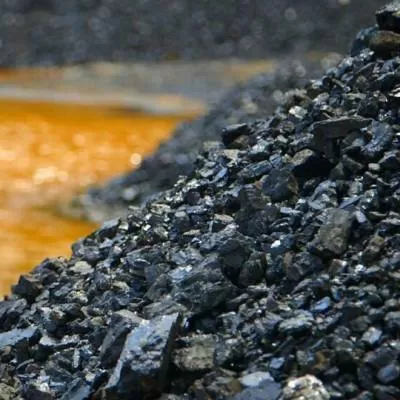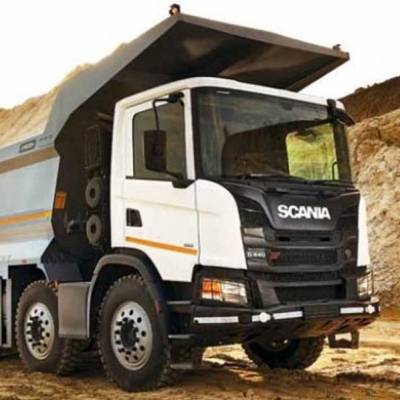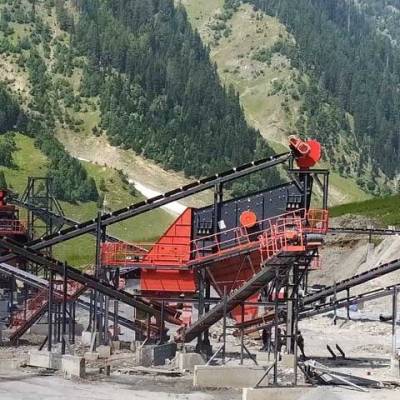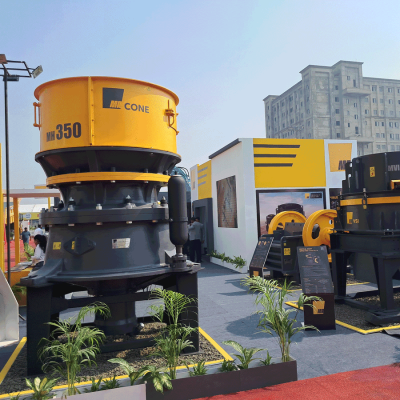- Home
- Infrastructure Energy
- COAL & MINING
- Scaling Up

Scaling Up
Industry voices speak in unison about coal mining driving the Indian mining industry in the near future.
´Over the next couple of years, the focus will be on coal mining because India is starved of power,´ says Shib Bhowmik, Country Head & Managing Director, Joy Global India. ´Ambitious targets set for Coal India will see production triple over the next five to six years, which will spur demand for mining equipment.´
´The government has set a target of 1.6 billion tonne for coal production, to be met through increasing the number of mines and reallocating existing mines,´ reflects Deepak Garg, CEO, Sany Heavy Industry India Pvt Ltd.
´Surface coal mining has several ongoing contracts for overburden removal and production, and new ones will surely come in to maintain Coal India´s higher production rate than in previous years, 8.8 per cent in the last few quarters,´ shares Subhasis Das, Vice President, Sandvik Mining India.
´Ambitious coal mining targets are creating and will continue to create bright opportunities in coal mining,´ opines GVS Narayana Reddy, COO, VPR Mining Infrastructure Pvt Ltd.
´With Prime Minister Modi having tasked the industry with delivering 1 billion tonne of coal per year by 2020, mining companies must increase their output at existing sites and look to develop new sites,´ says Dimitrov Krishnan, Vice President and Head, Volvo CE India. ´And the route to higher output is clear: It requires bigger and more productive machinery, so we see bright opportunities ahead.´
Large-scale contracting
About 90 per cent of India´s coal is produced from open pit mining, which involves removing the top soil in the ratio of approximately 1:4 - to produce 1 tonne of coal, you need to remove 4 tonne of overburden, explains Bhowmik. Contractors have traditionally been removing 50-60 per cent of the overburden; this is expected to continue. Bhowmik sees increasing scope for large mine-developer-and-operator (MDO) companies with a clear focus on safety and productivity and equipped to achieve huge targets, not for small contractors - ´the kind who use construction equipment in mines.´ ´Coal India has limited management time and resources, and will definitely prefer to deal with large contractors, just as global mining leaders like BHP and Rio Tinto rely on large contractors to achieve targets,´ he says.
In the private mining sector, producers of cement and steel with captive mines, are currently producing about 50 million tonne of coal. Bhowmik reckons this will have to be increased 10 times, to 600 million tonne, to meet government targets. As these companies possess scant mining experience, they will need to rely on experienced MDOs to de-risk their operations.
A positive is that medium-sized mining companies see bright prospects ahead as well. ´Projects to be developed through the MDO route are coming up as well for companies with 25 years plus operations experience. Awardees of these contracts will subcontract to reliable private companies that do not qualify directly for such projects,´ says Reddy, adding, ´We are a mid-sized company; we prefer to bid for government tenders worth a couple of thousand crore as those offer regular payment terms. Plenty of such opportunities exist because private companies are mining more cost-effectively than government companies, as is evident from the profits they are making from outsourcing activities.´
Greater scope for high-capacity equipment
Mining companies taking up ambitious targets are expected to drive demand for high-capacity and advanced equipment.
´We expect to see demand shift from diesel-driven small wheel loaders to electrically operated high-capacity mining shovels, small-capacity trucks to high-capacity dump trucks (Coal India has already put out tenders for 240-tonne trucks), drills with bigger diameter, etc,´ says Bhowmik.
Volvo recently introduced the EC750D, a 75-tonne rated excavator, its largest, to add to the EC480D, a 48-tonne rated excavator, which is a leading choice of mine operators. ´Its bigger capacity will help companies fill their trucks faster and boost productivity. Some units have already been delivered, we are seeing increasing enquiries for both this and the EC480D,´ shares Krishnan. ´We certainly expect more demand for advanced equipment that can deliver better productivity and efficiency,´ he adds. ´New entrants to the business will surely look for ways to improve efficiency and use different ways of working.´
´Opportunities for advanced equipment include the installation of fleet management systems and global tracking systems that facilitate higher productivity and improved customer communications,´ believes Garg. ´Telematics for tracking critical information like fuel level, equipment location, operating hours, service reminders, operational data, etc, will enable better equipment planning and its efficient and effective deployment.´
´Our new models offer fuel economy in a big way. We are bringing out loading machines with hybrid technology, automation and advanced safety features,´ says Bhowmik.
To boost the uptake of high-end equipment, Das believes mine owners should design contracts of capacity and value that justifies their use.
Underground developments Providers of solutions expect underground action to intensify.
´Production from underground mines, which had been reducing since nationalisation, has come into focus now,´ observes Das. ´Recently, the Central Mine Planning and Design Institute (CMPDIL) has worked out a roadmap to reach 100 mty production by 2020. Most of this growth will come from the mechanisation of existing underground mines and greenfield projects.´
Das has been privy to workshops to enthuse major contractors and OEMs from India and abroad to participate in the growth journey. Based on his experience, he says private coal block owners are not overly keen to invest on assets because of the low spot prices of both thermal and metallurgical coal.
Another area seeing action is exploration, which requires deep core and reverse circulation drilling, adds Das.
How will more underground mining impact demand for equipment?
´We expect automation to gain from the ongoing opening of the mining sector. Reducing the man-machine interface is critical for safer underground operations,´ adds Bhowmik.
Coal India has recently issued some tenders for the implementation of highwall mining systems, a system commonly used in the West for mining coal deposits locked underground in operating or abandoned mines. A few such systems are operating in the Indian market; these are from US-based manufacturers like Addcar and CAT.
´We see this as an opportunity to introduce more highwall mining systems for the mining of outcropping horizontal coal seams,´ says Vineet Mehra, Managing Director, Virginia Mining Resources, and explains the method:
´In this, an unmanned continuous miner is driven underground, propelled hydraulically, to penetrate the horizontal coal seam. The machine stands on the pit floor or on a bench, directly in front of the exposed seam, and makes long parallel rectangular drives into the coal seam. It is operated in front of the highwall.´
Miners´ choice
While large scale defines the way the industry is headed, high-capacity equipment has still not emerged as the regular choice of mining companies. Purchase decisions reflect tender specifications as well as technological superiority, experience of miners, quest for productivity and economy, and mine size.
´Above all else, mine operators want equipment that delivers the best value in terms of productivity,´ says Krishnan. ´Most equipment managers use detailed analysis to examine the cost-per-tonne of equipment and identify the machine with the lowest possible operating costs, maximum output and highest levels of reliability and durability.´
´Contract miners are looking for high productivity, reliability, service support, availability of parts and reasonable maintenance contract rates,´ opines Garg. ´While first movers will gain an early advantage, in the long run, technology and cost-effective sustainable solutions will be the key to thrive.´
´Mining companies have the practice of matching equipment to mine size,´ observes Bhowmik. Reddy explains how: ´Mining tenders state the minimum specifications of equipment to be used. Beyond that, the choice of equipment depends on the quantity of ore to be mined annually. We usually back-calculate; we figure out the monthly target, the daily target, and then work out the sizes of equipment that would best meet that daily output.´
´Our experience shows that industry-leading fuel efficiency, which lowers spending for owners, and the well-known reliability of machines backed by significant warranties help bag orders,´ adds Krishnan.
Reddy explains why fuel efficiency is critical: ´Higher capacity (>200 tonne) excavators offer capacity advantages but if you factor diesel consumption and maintenance into the equation, 120-tonne excavators of > 400 hp are more viable. Fuel is a critical component because contractors are paid for delivering the mined ore at a specified delivery or an unloading point. We aim for a mix of models from various leading suppliers like Sany, Volvo, Hitachi, Komatsu, etc.´
´Indian contractors have traditionally been more focused on the initial capex spend. Basically, they look to depreciate the capex spend within the lifetime of the contract,´ says Das. ´But now contractors are gradually moving towards value-based or lifecycle costing-based purchasing. They increasingly want to leverage the best technological knowhow available globally to increase the efficiency of operations and productivity at their mines. This calls for high-end technical competency and alliance with global organisations such as Sandvik. They are increasingly considering OEMs as partners, as solution providers for the successful execution of projects. OEMs like Sandvik can bring the technological expertise to understand the uniqueness of each mine.´
Indeed, the shift towards technology-intense mining is a step in the right direction.
Quick Bytes
- Focus to be on coal mining as India is starved of power.
- Surface coal mining has several ongoing contracts for overburden removal and production.
- Production from underground mines has come in focus; another area seeing action is exploration.
Prospects for metal mining
Industry voices are mixed about the prospects for metal mining. ´Iron and copper mining will be muted in the near term because, globally, excess capacity exists in iron ore mining,´ says Shib Bhowmik, Country Head & Managing Director, Joy Global India.
´Falling metal commodity prices may lead the metal giants to defer capex investment,´ observes Subhasis Das, Vice President, Sandvik Mining India. However, Das says this might open doors for professional contractors willing to invest in metal contract mining. Some copper mining opportunities are opening up in the eastern part of the country.
´The Odisha Government has planned to auction 10-12 large iron ore mines to boost supply to meet the expected increase in demand from the real estate, automotive and infrastructure sectors,´ says Deepak Garg, CEO, Sany Heavy Industry India Pvt Ltd.
India´s market for mining equipment
- Comprises 1,800 earthmoving units per year, split as 61% excavator and 25% dumper.
- In value terms, the market was worth $ 0.47 billion last year; 56% made up by dumpers and 34% by excavators.
- Demand is expected to grow by 16% in FY2016 to touch 2,080 units.
- Demand is expected to reach 2,465 units by 2020, growing at 4.3% CAGR.
- Government investment in mining up by 79% in the 12th Five-Year plan, vis-a-vis the previous plan outlay of $25.1 billion.
Source: Sany India
Innovative mining solution: heavy-duty surface miner
Mine location: Odisha
Challenge: A cement manufacturer faced resistance from nearby villagers for drilling and blasting at one of its limestone mines. It tried to overcome this challenge with two alternative technologies: surface miners and rock breakers. Surface miners are extensively used in coal and limestone mining in India. However, when both of these failed because of the excessively high hardness and compressive strength of the limestone - its compressive strength varies from 100-160 mpa while regular surface miners are meant to cut mineral rock of compressive strength 20-80 mpa - the company approached Virginia Mining Resources, a consulting and mining firm, for a novel solution.
Solution: ´We proposed a heavy-duty surface miner made by our OEM partners in the US. A heavy-duty surface miner, which is essentially a terrain leveller converted to mine minerals of high compressive strength and hardness,´ says Vineet Mehra, Managing Director, Virginia Mining Resources. ´We are also marketing the heavy-duty surface miner for the removal of overburden in coal mines.´ A heavy duty surface miner would cost 1.2 to 1.5 times the price of a regular surface miner.
- Charu bahri
To share your views on the Contract Mining scenario in India, write in at feedback@ConstructionWorld.in
Large-scale coal mining will drive the Indian mining industry in the near term. Industry voices speak in unison about coal mining driving the Indian mining industry in the near future. ´Over the next couple of years, the focus will be on coal mining because India is starved of power,´ says Shib Bhowmik, Country Head & Managing Director, Joy Global India. ´Ambitious targets set for Coal India will see production triple over the next five to six years, which will spur demand for mining equipment.´ ´The government has set a target of 1.6 billion tonne for coal production, to be met through increasing the number of mines and reallocating existing mines,´ reflects Deepak Garg, CEO, Sany Heavy Industry India Pvt Ltd. ´Surface coal mining has several ongoing contracts for overburden removal and production, and new ones will surely come in to maintain Coal India´s higher production rate than in previous years, 8.8 per cent in the last few quarters,´ shares Subhasis Das, Vice President, Sandvik Mining India. ´Ambitious coal mining targets are creating and will continue to create bright opportunities in coal mining,´ opines GVS Narayana Reddy, COO, VPR Mining Infrastructure Pvt Ltd. ´With Prime Minister Modi having tasked the industry with delivering 1 billion tonne of coal per year by 2020, mining companies must increase their output at existing sites and look to develop new sites,´ says Dimitrov Krishnan, Vice President and Head, Volvo CE India. ´And the route to higher output is clear: It requires bigger and more productive machinery, so we see bright opportunities ahead.´ Large-scale contracting About 90 per cent of India´s coal is produced from open pit mining, which involves removing the top soil in the ratio of approximately 1:4 - to produce 1 tonne of coal, you need to remove 4 tonne of overburden, explains Bhowmik. Contractors have traditionally been removing 50-60 per cent of the overburden; this is expected to continue. Bhowmik sees increasing scope for large mine-developer-and-operator (MDO) companies with a clear focus on safety and productivity and equipped to achieve huge targets, not for small contractors - ´the kind who use construction equipment in mines.´ ´Coal India has limited management time and resources, and will definitely prefer to deal with large contractors, just as global mining leaders like BHP and Rio Tinto rely on large contractors to achieve targets,´ he says. In the private mining sector, producers of cement and steel with captive mines, are currently producing about 50 million tonne of coal. Bhowmik reckons this will have to be increased 10 times, to 600 million tonne, to meet government targets. As these companies possess scant mining experience, they will need to rely on experienced MDOs to de-risk their operations. A positive is that medium-sized mining companies see bright prospects ahead as well. ´Projects to be developed through the MDO route are coming up as well for companies with 25 years plus operations experience. Awardees of these contracts will subcontract to reliable private companies that do not qualify directly for such projects,´ says Reddy, adding, ´We are a mid-sized company; we prefer to bid for government tenders worth a couple of thousand crore as those offer regular payment terms. Plenty of such opportunities exist because private companies are mining more cost-effectively than government companies, as is evident from the profits they are making from outsourcing activities.´ Greater scope for high-capacity equipment Mining companies taking up ambitious targets are expected to drive demand for high-capacity and advanced equipment. ´We expect to see demand shift from diesel-driven small wheel loaders to electrically operated high-capacity mining shovels, small-capacity trucks to high-capacity dump trucks (Coal India has already put out tenders for 240-tonne trucks), drills with bigger diameter, etc,´ says Bhowmik. Volvo recently introduced the EC750D, a 75-tonne rated excavator, its largest, to add to the EC480D, a 48-tonne rated excavator, which is a leading choice of mine operators. ´Its bigger capacity will help companies fill their trucks faster and boost productivity. Some units have already been delivered, we are seeing increasing enquiries for both this and the EC480D,´ shares Krishnan. ´We certainly expect more demand for advanced equipment that can deliver better productivity and efficiency,´ he adds. ´New entrants to the business will surely look for ways to improve efficiency and use different ways of working.´ ´Opportunities for advanced equipment include the installation of fleet management systems and global tracking systems that facilitate higher productivity and improved customer communications,´ believes Garg. ´Telematics for tracking critical information like fuel level, equipment location, operating hours, service reminders, operational data, etc, will enable better equipment planning and its efficient and effective deployment.´ ´Our new models offer fuel economy in a big way. We are bringing out loading machines with hybrid technology, automation and advanced safety features,´ says Bhowmik. To boost the uptake of high-end equipment, Das believes mine owners should design contracts of capacity and value that justifies their use. Underground developments Providers of solutions expect underground action to intensify. ´Production from underground mines, which had been reducing since nationalisation, has come into focus now,´ observes Das. ´Recently, the Central Mine Planning and Design Institute (CMPDIL) has worked out a roadmap to reach 100 mty production by 2020. Most of this growth will come from the mechanisation of existing underground mines and greenfield projects.´ Das has been privy to workshops to enthuse major contractors and OEMs from India and abroad to participate in the growth journey. Based on his experience, he says private coal block owners are not overly keen to invest on assets because of the low spot prices of both thermal and metallurgical coal. Another area seeing action is exploration, which requires deep core and reverse circulation drilling, adds Das. How will more underground mining impact demand for equipment? ´We expect automation to gain from the ongoing opening of the mining sector. Reducing the man-machine interface is critical for safer underground operations,´ adds Bhowmik. Coal India has recently issued some tenders for the implementation of highwall mining systems, a system commonly used in the West for mining coal deposits locked underground in operating or abandoned mines. A few such systems are operating in the Indian market; these are from US-based manufacturers like Addcar and CAT. ´We see this as an opportunity to introduce more highwall mining systems for the mining of outcropping horizontal coal seams,´ says Vineet Mehra, Managing Director, Virginia Mining Resources, and explains the method: ´In this, an unmanned continuous miner is driven underground, propelled hydraulically, to penetrate the horizontal coal seam. The machine stands on the pit floor or on a bench, directly in front of the exposed seam, and makes long parallel rectangular drives into the coal seam. It is operated in front of the highwall.´ Miners´ choice While large scale defines the way the industry is headed, high-capacity equipment has still not emerged as the regular choice of mining companies. Purchase decisions reflect tender specifications as well as technological superiority, experience of miners, quest for productivity and economy, and mine size. ´Above all else, mine operators want equipment that delivers the best value in terms of productivity,´ says Krishnan. ´Most equipment managers use detailed analysis to examine the cost-per-tonne of equipment and identify the machine with the lowest possible operating costs, maximum output and highest levels of reliability and durability.´ ´Contract miners are looking for high productivity, reliability, service support, availability of parts and reasonable maintenance contract rates,´ opines Garg. ´While first movers will gain an early advantage, in the long run, technology and cost-effective sustainable solutions will be the key to thrive.´ ´Mining companies have the practice of matching equipment to mine size,´ observes Bhowmik. Reddy explains how: ´Mining tenders state the minimum specifications of equipment to be used. Beyond that, the choice of equipment depends on the quantity of ore to be mined annually. We usually back-calculate; we figure out the monthly target, the daily target, and then work out the sizes of equipment that would best meet that daily output.´ ´Our experience shows that industry-leading fuel efficiency, which lowers spending for owners, and the well-known reliability of machines backed by significant warranties help bag orders,´ adds Krishnan. Reddy explains why fuel efficiency is critical: ´Higher capacity (>200 tonne) excavators offer capacity advantages but if you factor diesel consumption and maintenance into the equation, 120-tonne excavators of > 400 hp are more viable. Fuel is a critical component because contractors are paid for delivering the mined ore at a specified delivery or an unloading point. We aim for a mix of models from various leading suppliers like Sany, Volvo, Hitachi, Komatsu, etc.´ ´Indian contractors have traditionally been more focused on the initial capex spend. Basically, they look to depreciate the capex spend within the lifetime of the contract,´ says Das. ´But now contractors are gradually moving towards value-based or lifecycle costing-based purchasing. They increasingly want to leverage the best technological knowhow available globally to increase the efficiency of operations and productivity at their mines. This calls for high-end technical competency and alliance with global organisations such as Sandvik. They are increasingly considering OEMs as partners, as solution providers for the successful execution of projects. OEMs like Sandvik can bring the technological expertise to understand the uniqueness of each mine.´ Indeed, the shift towards technology-intense mining is a step in the right direction. Quick Bytes Focus to be on coal mining as India is starved of power. Surface coal mining has several ongoing contracts for overburden removal and production. Production from underground mines has come in focus; another area seeing action is exploration. Prospects for metal mining Industry voices are mixed about the prospects for metal mining. ´Iron and copper mining will be muted in the near term because, globally, excess capacity exists in iron ore mining,´ says Shib Bhowmik, Country Head & Managing Director, Joy Global India. ´Falling metal commodity prices may lead the metal giants to defer capex investment,´ observes Subhasis Das, Vice President, Sandvik Mining India. However, Das says this might open doors for professional contractors willing to invest in metal contract mining. Some copper mining opportunities are opening up in the eastern part of the country. ´The Odisha Government has planned to auction 10-12 large iron ore mines to boost supply to meet the expected increase in demand from the real estate, automotive and infrastructure sectors,´ says Deepak Garg, CEO, Sany Heavy Industry India Pvt Ltd. India´s market for mining equipment Comprises 1,800 earthmoving units per year, split as 61% excavator and 25% dumper. In value terms, the market was worth $ 0.47 billion last year; 56% made up by dumpers and 34% by excavators. Demand is expected to grow by 16% in FY2016 to touch 2,080 units. Demand is expected to reach 2,465 units by 2020, growing at 4.3% CAGR. Government investment in mining up by 79% in the 12th Five-Year plan, vis-a-vis the previous plan outlay of $25.1 billion. Source: Sany India Innovative mining solution: heavy-duty surface miner Mine location: Odisha Challenge: A cement manufacturer faced resistance from nearby villagers for drilling and blasting at one of its limestone mines. It tried to overcome this challenge with two alternative technologies: surface miners and rock breakers. Surface miners are extensively used in coal and limestone mining in India. However, when both of these failed because of the excessively high hardness and compressive strength of the limestone - its compressive strength varies from 100-160 mpa while regular surface miners are meant to cut mineral rock of compressive strength 20-80 mpa - the company approached Virginia Mining Resources, a consulting and mining firm, for a novel solution. Solution: ´We proposed a heavy-duty surface miner made by our OEM partners in the US. A heavy-duty surface miner, which is essentially a terrain leveller converted to mine minerals of high compressive strength and hardness,´ says Vineet Mehra, Managing Director, Virginia Mining Resources. ´We are also marketing the heavy-duty surface miner for the removal of overburden in coal mines.´ A heavy duty surface miner would cost 1.2 to 1.5 times the price of a regular surface miner. - Charu bahri To share your views on the Contract Mining scenario in India, write in at feedback@ConstructionWorld.in


